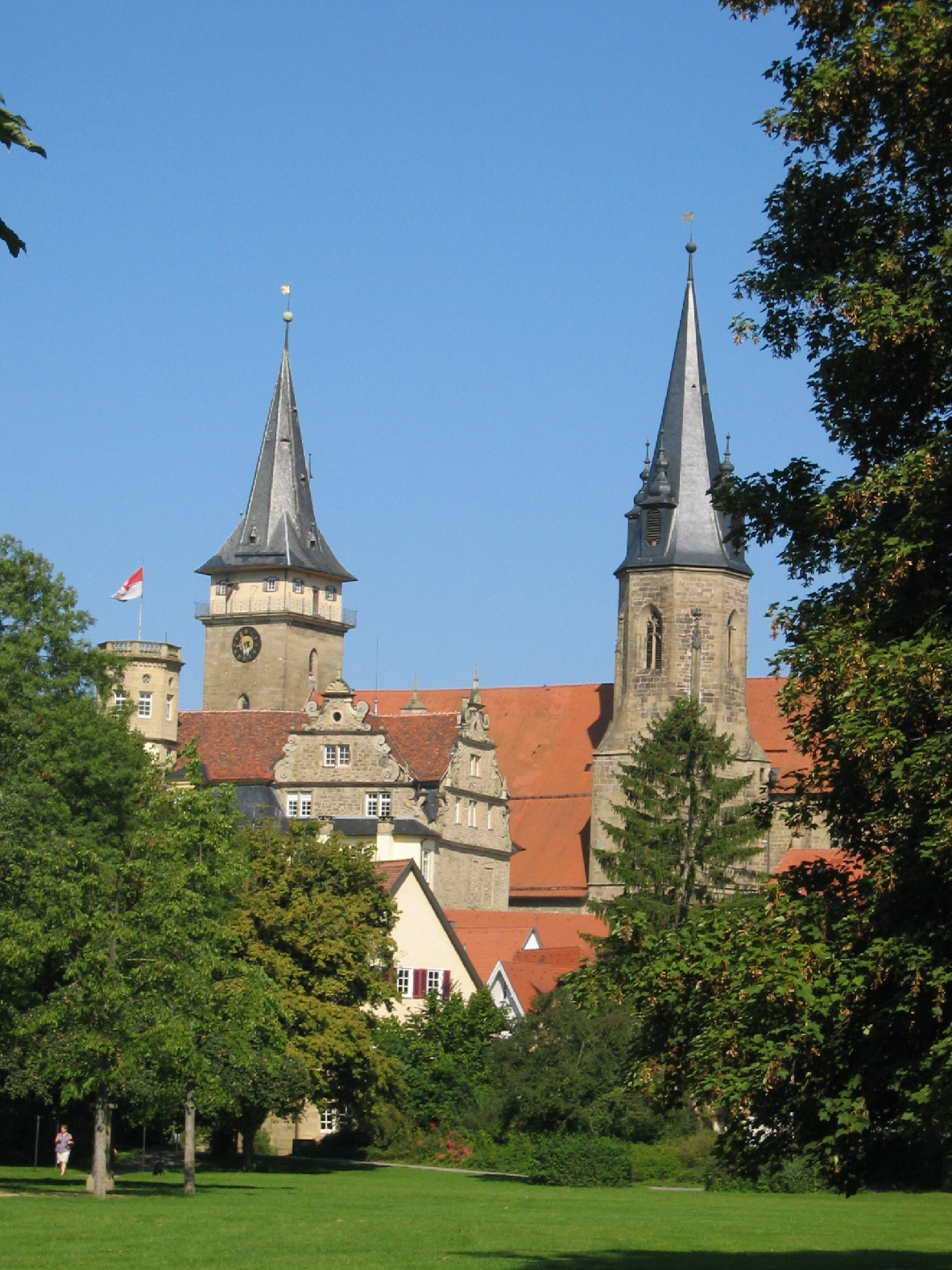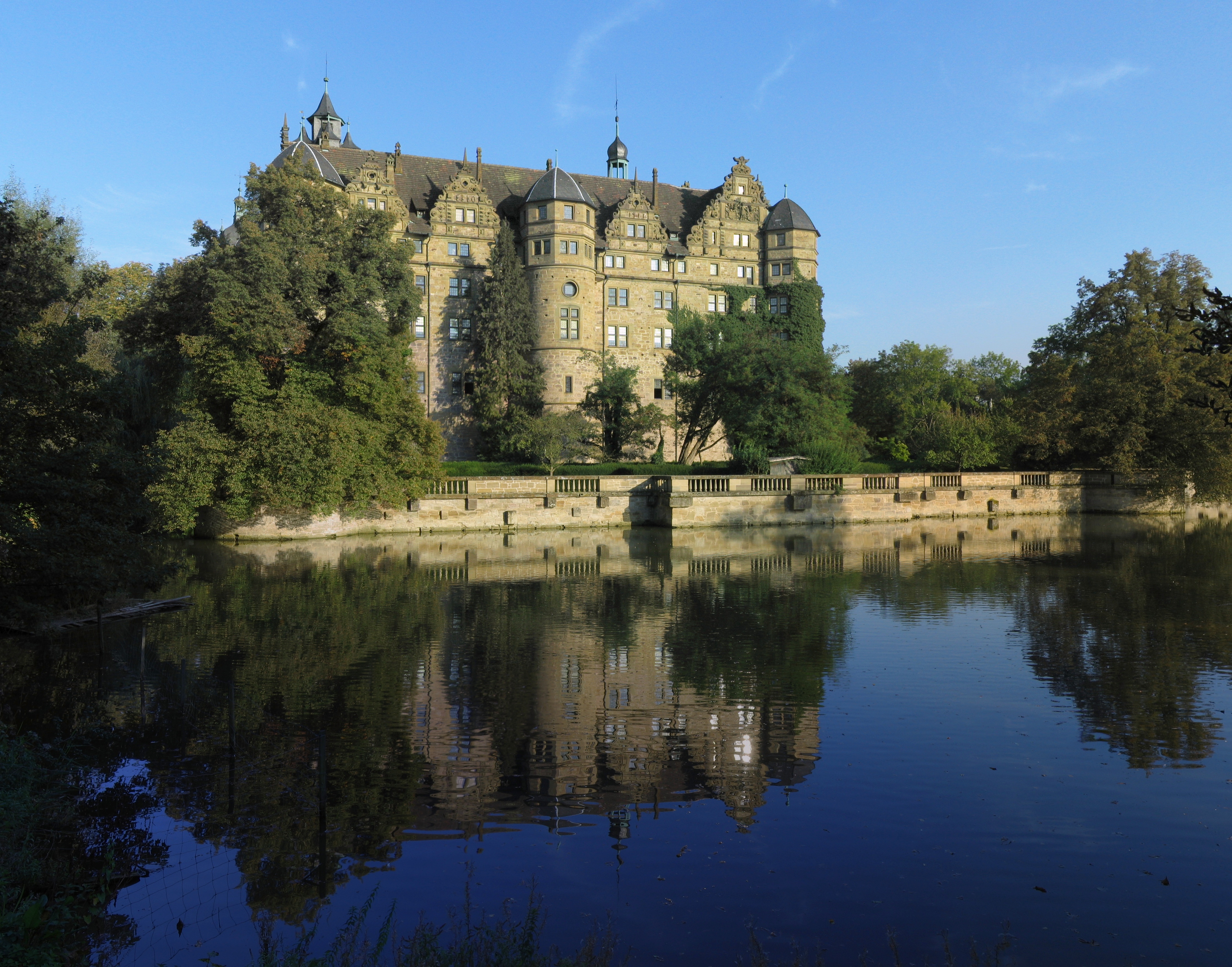|
Hohenlohe (district)
The Hohenlohe (german: Hohenlohekreis ) is a ''Landkreis'' (district) in the north of Baden-Württemberg, Germany. Neighboring districts are (from north clockwise) Neckar-Odenwald, Main-Tauber, Schwäbisch Hall and Heilbronn. Künzelsau is the administrative centre of the district. Industry and companies The Hohenlohekreis is host to many internationally active companies in the screws and ventilation industries. * Würth * Stahl History The district was created in 1973 by merging the previous districts of Öhringen and Künzelsau. It was named after the Hohenlohe family, who had once ruled most of the area until 1806, when they lost their independence as this area became part of the Kingdom of Württemberg. Geography The two main rivers of the districts are the Kocher and Jagst, both tributaries of the Neckar. The highest elevation in the district, at , is the Mühlberg, near Waldenburg. Partnerships Since 1990, the district has had a partnership with the County Limerick ... [...More Info...] [...Related Items...] OR: [Wikipedia] [Google] [Baidu] |
Künzelsau
Künzelsau (; East Franconian: ''Kinzelse'') is a town in Baden-Württemberg, in south central Germany. It is the capital of the Hohenlohe district. It is located on the river Kocher, 19 km (12 mi) north of Schwäbisch Hall, and 37 km (23 mi) northeast of Heilbronn. Geography The city of Künzelsau is located, at elevation , along the Kocher River, a right tributary of the Neckar River, some 40 km east (25 mi) of Heilbronn. The city is, after Öhringen, the second largest city of the Hohenlohe district, whose seat it is. The Hohenlohe district was created on 1 January 1973 by merging the former districts of Künzelsau (KÜN) and Öhringen (ÖHR). The city of Künzelsau thus retained being the district seat, so that the license plate number still uses KÜN. Künzelsau is one of seven centers in the region Heilbronn-Franken within the administrative district of Stuttgart. City arrangement The city of Künzelsau is located in the valley (elev ... [...More Info...] [...Related Items...] OR: [Wikipedia] [Google] [Baidu] |
County Limerick
"Remember Limerick" , image_map = Island_of_Ireland_location_map_Limerick.svg , subdivision_type = Country , subdivision_name = Republic of Ireland, Ireland , subdivision_type1 = Provinces of Ireland, Province , subdivision_name1 = Munster , subdivision_type2 = Regions of Ireland, Region , subdivision_name2 = Southern Region, Ireland, Southern Mid-West Region, Ireland, (Mid-West) , seat_type = County town , seat = Limerick and Newcastle West , leader_title = Local government in the Republic of Ireland, Local authority , leader_name = Limerick City and County Council , leader_title2 = Dáil constituencies , leader_name2 = Limerick City (Dáil constituency), Limerick City and Limerick County (Dáil constituency), Limerick County , leader_title3 = European Parliament constituencies in the Republic of Ireland, EP constituency , leader_name3 = South (Eur ... [...More Info...] [...Related Items...] OR: [Wikipedia] [Google] [Baidu] |
Dörzbach
Dörzbach ( East Franconian: ''Därzbach'') is a municipality in the Jagst river valley in the Hohenlohe district of Baden-Württemberg, in south central Germany. It is also the site of 3 historic castles, the Chapel of St. Wendel (in a limestone hillside), and a stone bridge built in 1808-1810 for King Frederick I of Württemberg. Records for the Dörzbach area date to 1230, but the modern incorporation was approved during 1972-74. Geography of Dörzbach Dörzbach is located in the Jagst river valley, at an elevation of , in southern Germany. Communities Dörzbach includes Dörzbach proper (1465 inhabitants, with the churches of Birkenhöfe and St. Wendel zum Stein) and from the unincorporated former municipalities, Hohebach (with the hamlets Eisenhutsrot, Heßlachshof and Wendischenhof, together 646 inhabitants), Laibach (183 people) and Meßbach (170 inhabitants). In the area of the community of Dörzbach, within the limits set 31 December 1971, are the deserted villag ... [...More Info...] [...Related Items...] OR: [Wikipedia] [Google] [Baidu] |
Bretzfeld
Bretzfeld is a municipality in the Hohenlohe district, in Baden-Württemberg, Germany. It is located east of Heilbronn Heilbronn () is a city in northern Baden-Württemberg, Germany, surrounded by Heilbronn District. With over 126,000 residents, it is the sixth-largest city in the state. From the late Middle Ages, it developed into an important trading centre. A .... There is an exit (Nr. 39) with the same name at the A6 motorway. References Hohenlohe (district) {{Hohenlohe-geo-stub ... [...More Info...] [...Related Items...] OR: [Wikipedia] [Google] [Baidu] |
Öhringen
Öhringen ( East Franconian: ''Ähringe'') is the largest town in Hohenlohe (district) in the state of Baden-Württemberg, in southwest Germany, near Heilbronn. Öhringen is on the railline to Schwäbisch Hall and Crailsheim. With a population of 24,374 (2019), the town is diverse. It is a quaint medieval place, and, among its ancient buildings, boasts a fine Evangelical church (german: Stiftskirche) containing carvings in cedar-wood from the 15th century and numerous interesting tombs and monuments; a Renaissance town hall; the building, now used as a library, which formerly belonged to a monastery, erected in 1034; and a palace, the former residence of the princes of Hohenlohe-Öhringen. ''Vicus Aurelii'' to the Romans. Eastwards of it runs the old limes Roman frontier wall, and numerous remains and inscriptions dating from the days of the Roman settlement have been discovered, including traces of three camps. Geography Geographical location Öhringen is located in the w ... [...More Info...] [...Related Items...] OR: [Wikipedia] [Google] [Baidu] |
Niedernhall
Niedernhall () is a town in the Hohenlohe district, in Baden-Württemberg, Germany. It is situated on the river Kocher, 6 km west of Künzelsau, and 33 km northeast of Heilbronn Heilbronn () is a city in northern Baden-Württemberg, Germany, surrounded by Heilbronn District. With over 126,000 residents, it is the sixth-largest city in the state. From the late Middle Ages, it developed into an important trading centre. A .... Mayors after 1945 References Hohenlohe (district) {{Hohenlohe-geo-stub ... [...More Info...] [...Related Items...] OR: [Wikipedia] [Google] [Baidu] |
Neuenstein, Baden-Württemberg
Neuenstein is a town in the Hohenlohe district, in Baden-Württemberg, Germany. It is situated 12 km southwest of Künzelsau, and 27 km east of Heilbronn. The 16th century castle, home to H.S.H. the prince of Hohenlohe-Oehringen, is open to visitors. Mayor From 1999 to 2015 Sabine Eckert-Viereckel was the mayor. In February 2015 Karl Michael Nicklas was elected with 85% of the votes. Sons and daughters of the town * Wendel Hipler (around 1465–1526), leader of the peasants in the German Peasants' War * Wolfgang Julius, Count of Hohenlohe-Neuenstein (1622–1698), (Count of Hohenlohe-Neuenstein and imperial Generalfeldmarschall ''Generalfeldmarschall'' (from Old High German ''marahscalc'', "marshal, stable master, groom"; en, general field marshal, field marshal general, or field marshal; ; often abbreviated to ''Feldmarschall'') was a rank in the armies of several ... in the Turkish War References Hohenlohe (district) {{Hohenlohe- ... [...More Info...] [...Related Items...] OR: [Wikipedia] [Google] [Baidu] |
Krautheim
Krautheim (East Franconian: ''Graude'') is a town in the Hohenlohe district of Baden-Württemberg, in south central Germany. It is situated on the river Jagst, 12 km (8 mi) northwest of Künzelsau, and 16 km (10 mi) southwest of Bad Mergentheim. The town lies in the border area between the Baden and Württemberg regions. Records from the year 1096 mention the area as "Crutheim", but the modern incorporation was approved during 1972-73. Geography Geographical location Krautheim is located at the northernmost point of the Jagst river, at elevation , in southern Germany. The Jagst river, in this area, has dug into the limestone terrain of the Hoheloher Ebene. Characteristic of Krautheim is the view of the same castle visible from afar, which offers a 17 m high and up to 2.70 m thick shield wall (), as an impressive sight. The massive castle keep, with its height of , gives a comprehensive view into the Jagst valley and the surrounding landscape. City ... [...More Info...] [...Related Items...] OR: [Wikipedia] [Google] [Baidu] |
Ingelfingen
Ingelfingen is a town in the Hohenlohe district, in Baden-Württemberg, Germany. It is situated on the river Kocher, 4 km northwest of Künzelsau, and 36 km northeast of Heilbronn. Twin towns Ingelfingen is twinned with: * Saint-Héand, France, since 1991 Sons and daughters of the place * Frederick Louis, Prince of Hohenlohe-Ingelfingen (1747-1818), Prussian general and Hohenlohe prince * Friedrich Karl Wilhelm, Fürst zu Hohenlohe Friedrich Karl Wilhelm, Fürst (prince) zu Hohenlohe-Ingelfingen (February 16, 1752 – January 16, 1814) was a general in the military service of the House of Habsburg during the French Revolutionary Wars and the Napoleonic Wars. He was born ... (1752-1815), Field Marshal Lieutenant, Prince of Hohenlohe-Ingelfingen References Hohenlohe (district) Württemberg {{Hohenlohe-geo-stub ... [...More Info...] [...Related Items...] OR: [Wikipedia] [Google] [Baidu] |
Forchtenberg
Forchtenberg is a town in the district of Hohenlohekreis, northern Baden-Württemberg. It lies on the side of a partly fortified hill overlooking the Kocher valley where the Kupfer river flows into the Kocher. The name Forchtenberg is derived from "vor dem Berg" or "before the hill" in English. Geography Forchtenberg lies on north-facing hill overlooking the Kocher and Kupfer rivers. To the south of Forchtenberg the hills rise higher to woodland and the Hohenlohe plateau beyond. To the north runs the long Kocher valley. Opposite Forchtenberg the hills are a rich tapestry of south-facing vineyards. Administrative districts Forchtenberg encompasses a number of communities: Forchtenberg itself, Sindringen, Ernsbach, Wohlmuthausen and Muthof. A number of outlying hamlets also fall under the town of Forchtenberg: Büschelhof, Haberhof, Hohensall, Metzdorf, Neuwülfingen, Orbachshof, Rauhbusch, Schießhof, Schleierhof, Schwarzenweiler and Waldfeld. History Forchtenberg was origi ... [...More Info...] [...Related Items...] OR: [Wikipedia] [Google] [Baidu] |
Wheel Of Mainz
The Wheel of Mainz or ''Mainzer Rad'', in German, was the coat of arms of the Archbishopric of Mainz and thus also of the Electorate of Mainz (Kurmainz), in Rhineland-Palatinate, Germany. It consists of a silver wheel with six spokes on a red background. The wheel can also be found in stonemasons' carvings (e.g. landmarks) and similar objects. Currently, the City of Mainz uses a double wheel connected by a silver cross. Origin The origins of the wheel are not known. One theory traces it back to Bishop Willigis, who was elected Archbishop of Mainz in 975. According to a tale delivered by the Brothers Grimm, his ancestors had been wheelwrights and his adversaries sneered at him for his mean birth. They drew wheels on the walls and doors of his residence, Willigis though made it his personal ensign with the motto "Willigis, remember where you came from". However, this is not proven, and in any case coats of arms only appeared in the 12th century. Most of the archbishops of Mainz ... [...More Info...] [...Related Items...] OR: [Wikipedia] [Google] [Baidu] |
Hohenlohisch
Hohenlohisch is an East Franconian dialect spoken principally in north-eastern Baden-Württemberg in Germany, and which also overlaps dialects on the Bavarian border. It is spoken in Landkreis Schwäbisch Hall, Hohenlohekreis and what was formerly the Bad Mergentheim Landkreis (now in the Main-Tauber-Kreis), although the latter has recently been assumed into the Tauber-Franconian dialect group. Origin of name The name ''Hohenlohisch'' comes from the aristocratic Hohenlohe dynasty, which divided into a number of branches, and the name of their Imperial State. Two branches of the family were raised to the rank of principalities of the Holy Roman Empire in 1744 and 1764 respectively; in 1806 they lost their independence and their lands became part of the Kingdoms of Bavaria (Hohenlohe-Schillingsfürst) and of Württemberg. At the time of the Confederation of the Rhine in 1806, the area of Hohenlohe was 1 760 km² and its estimated population was 108,000. In the course of ti ... [...More Info...] [...Related Items...] OR: [Wikipedia] [Google] [Baidu] |






